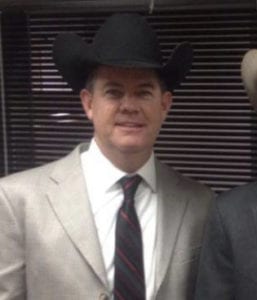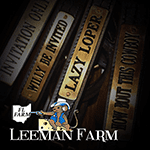GoHorseShow would like to thank judge John Briggs of Pilot Point, Texas for taking the time to break down the Congress Youth 12-14, 15-18 and Amateur Horsemanship pattern for us. A huge bonus is that Briggs is a judge at this year’s show. As a carded AQHA judge, he has had the privilege of judging World Shows and major events all over the world.
We would also like to thank HorseShowPatterns.com for allowing us to post the pattern in the article. You may view the pattern that is displayed below or download it here. GoHorseShow chose this pattern because we thought it would be beneficial to breakdown one of the more challenging patterns as some of the less complicated patterns have many of the same maneuvers.
Horsemanship Pattern Breakdown as seen by John Briggs
The Horsemanship pattern for the 12-14, 15-18 and Amateur class looks to be challenging this year. It has several transitions, a lead change and turns in both directions. It is vital for the exhibitors to be focused and be planning and thinking ahead to execute a smooth and precise pattern.
⁃ The first thing to note on the pattern is that it says to be ready at A. That’s important for the judges to see you prepared and organized to start your pattern at the cone.  ⁃ The 1st maneuver is to walk two horse lengths then lope off on the left lead. The walk should be straight in motion with purpose, approximately eight steps, then holding that straight line as the lope is engaged. Next, will be a square corner at B. It’s important to have the placement of that square corner done to where cone B is directly behind the exhibitor as they continue to lope across the arena.
⁃ The 1st maneuver is to walk two horse lengths then lope off on the left lead. The walk should be straight in motion with purpose, approximately eight steps, then holding that straight line as the lope is engaged. Next, will be a square corner at B. It’s important to have the placement of that square corner done to where cone B is directly behind the exhibitor as they continue to lope across the arena.
⁃ As you lope across the arena, it is essential to hold a steady straight line while you approach and execute the lead change, which looks to be in the center of the pattern. The lead change can be a simple or flying lead change; most judges would prefer to see a well executed simple change versus a rough flying change.
⁃ Next, the pattern calls for an extended lope going into a circle and collecting at C and continuing back to center. The distance between B and C will determine the size of your circle. It is also vital to show a significant change in pace from the extended to the collected lope. Control is the most important thing to have here. Don’t go faster in the extended lope than your horse is prepared for. Keep smoothness and a good rhythm rather than going too fast and having your horse get resistant.
⁃ At center, stop and perform a 360° turn to the right. That stop and turn should the about the same area that the one change was done and cone B should be directly behind you.
⁃ Then, the pattern calls for an extended trot making a square corner to the left, then slowing to a jog at the midway point. Then, make another left square corner approximately even with where the left lead was departed at the beginning of the pattern.
⁃ The pattern finishes with a stop even with center and performing a 270° turn to the left and back one horse length. Then, exit arena at the extended trot.
This is an excellent pattern to show control and the riders abilities to hold a good position through many transitions and changes of direction. Good Luck to all the exhibitors.
 About the Author: John Briggs has been an AQHA judge for 17 years. He has judged the All American Quarter Horse Congress, AQHA World Show and AQHA Select World Show. He has coached many youth and Amateurs to World and Congress titles. He also holds his NSBA and APHA judges cards. John and his wife Jill and three kids reside in Pilot Point, TX where they own and operate Briggs Show Horses.
About the Author: John Briggs has been an AQHA judge for 17 years. He has judged the All American Quarter Horse Congress, AQHA World Show and AQHA Select World Show. He has coached many youth and Amateurs to World and Congress titles. He also holds his NSBA and APHA judges cards. John and his wife Jill and three kids reside in Pilot Point, TX where they own and operate Briggs Show Horses.








